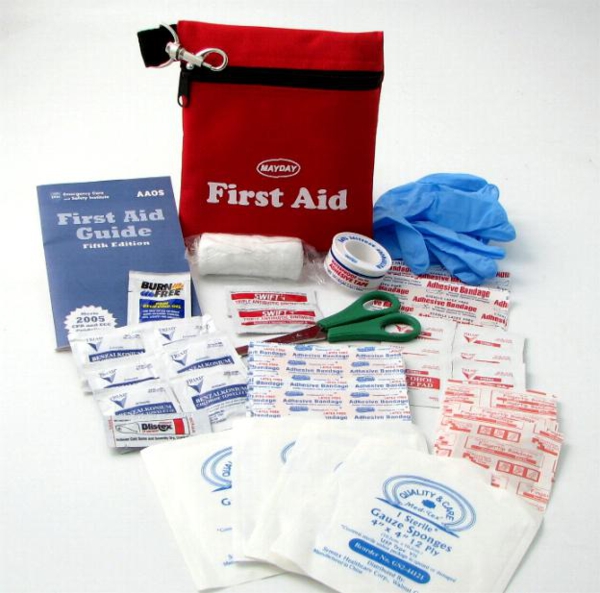Every home should have a first aid kit. Whether you are living in a household of happy-go-lucky young students or in a family with accident-prone toddlers, first aid can help treat minor injuries and illnesses and, with basic first aid course training, you can help treat serious accidents before further medical attention is sought.
Buy a First Aid Kit or Make Your Own?
You can buy a ready made kit at your local supermarket or pharmacy, and they usually come in a rather nice looking tin with all the essentials inside. However, it is easy to make your own and, not only will it be much cheaper, but you can custom make them to your personal requirements. Pound shops sell the likes of bandages, band-aids and tablets like paracetamol at very cheap prices. If you or someone in your household has specific medical needs like, for example, medication for diabetes or allergies, you might need a larger kit to fit additional medicines. If you do make your own, it should be a secure, dry and airtight container. Make sure it has a lock or safety catch if you have small children.

Emergency Names and Phone Numbers
Storing emergency contacts in your first aid kit ensures that you are well prepared in case of emergency, and knowing who to contact can help you keep a level head. You’ll know exactly where they are so you don’t need to rush around ringing other people for numbers or have to try and search through Google and Yellow Pages while treating an accident. Numbers for the local police station, poison control, NHS helpline and your GP are very useful. Phone numbers of family members are handy, too, as you may need an emergency babysitter if one of your children has an accident.
Basic Essentials
You should never under stock when it comes to buying first aid essentials. Items that you think you will never need can be very handy in some emergencies.
- A variety of plasters and bandages
- Sealed gauze dressings
- Scissors and tweezers
- Emergency eyewash kit
- Disposable sterile gloves
- Pain, antihistimine and anti-allergy medication
- Medical tape
- Thermometer
- Antiseptic creams and ointments
Promptly replace any supplies that you have used, and regularly check the expiry dates.
Fit Your First Aid Kit To Your Family
First aid essentials will be useful in the most common household accidents and emergencies. However, some households will require additional supplies. Small children cannot take adult painkillers and cough medicines, so some families will need child-friendly medication in their kit. People who suffer from allergies and require an EpiPen or special medication should always keep them in the same place. This way, they can easily be found in an emergency and even someone who doesn’t live in the household will know where to find them.
Basic First Aid Training
A basic first aid course can help treat accidents and emergencies like choking, burns and cuts, as well as teach you what to do if someone is having a stroke or heart attack. Organisations like the Red Cross can offer a basic first aid course that is flexible and not formally assessed. You can learn treatments in a relaxed, friendly environment and some are only a few hours long. Basic first aid training can help save a life and should be considered if you are caring for the young or elderly.
Ross Davies writing for Lebrreton Health & Safety Training specialists in First Aid Training Courses.

